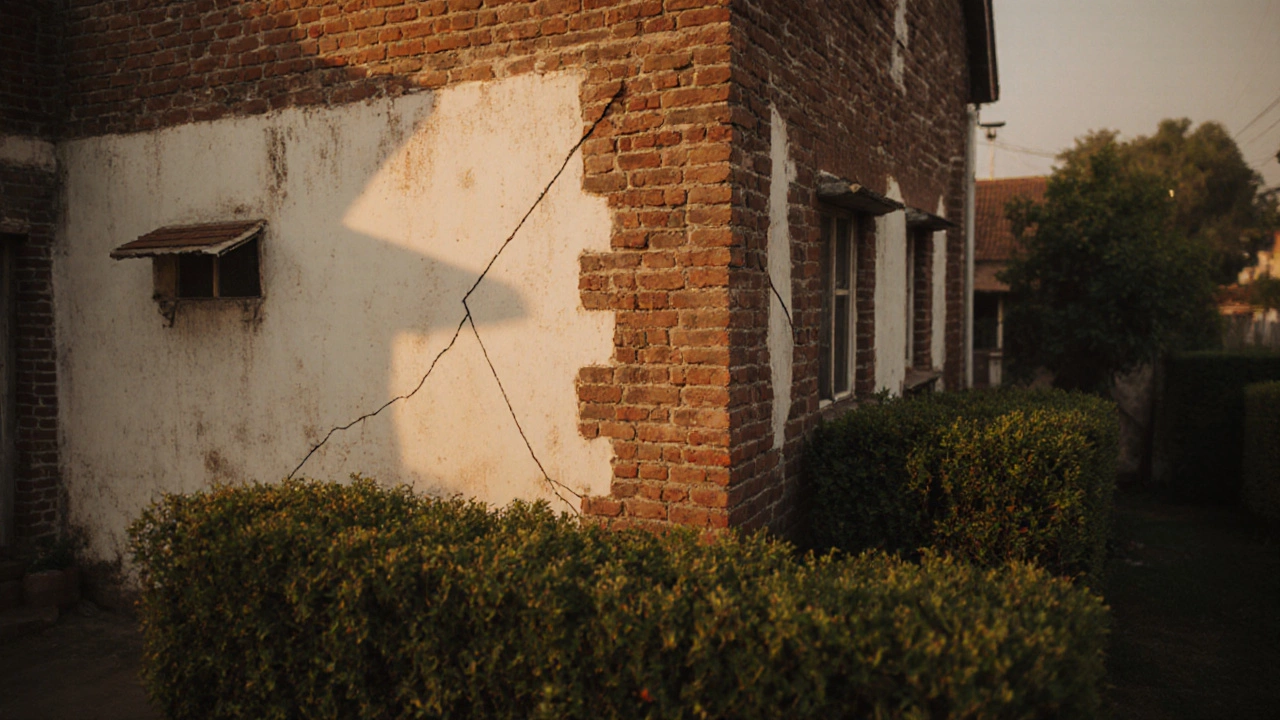Cracks in Old House: Causes, Risks, and Real Fixes
When you spot cracks in old house, visible separations in walls, ceilings, or foundations that signal movement or stress in building materials. Also known as structural fissures, these lines aren’t just cosmetic—they’re clues to how your home is behaving over time. Not every crack means disaster. A thin, vertical line near a window might be normal settling. But a jagged, wide crack running from floor to ceiling? That’s a red flag.
Foundation cracks, cracks that appear in the base of a building where it meets the ground. Also known as structural foundation issues, these are the most serious because they affect the entire structure. They often show up as stair-step patterns in brickwork, wide gaps around door frames, or cracks that get wider over months. These aren’t caused by bad paint or cheap drywall—they’re tied to house settlement, the gradual sinking or shifting of a home’s foundation due to soil movement, water damage, or poor initial construction. Clay soils expand when wet and shrink when dry. Tree roots pull moisture from under your home. Old foundations built on unstable ground? They’re prone to movement. And if you’ve seen water pooling near your basement walls or gutters overflowing, that’s often the hidden trigger.
What makes a crack dangerous? Size, shape, and change over time. Hairline cracks under 1/8 inch? Usually harmless. Cracks wider than 1/4 inch? That’s when you start checking for uneven floors, sticking doors, or windows that won’t close. If the crack is growing, or if it’s horizontal across a foundation wall, you’re looking at potential structural damage, a condition where load-bearing parts of a building are compromised, risking safety and value. This isn’t something you fix with caulk. It needs real engineering—piering, underpinning, or slab jacking. And if you’re thinking about selling, these cracks can tank your appraisal.
But here’s the good news: many cracks in old houses are fixable—especially if caught early. You don’t always need a $20,000 repair. Sometimes it’s just better drainage, removing nearby trees, or sealing the crack with epoxy. That’s why knowing the difference matters. The posts below walk you through real cases: how to tell if a crack is just aging or actively failing, what tools pros use to diagnose it, and step-by-step fixes you can do yourself before calling in the experts. You’ll see what’s actually worth worrying about—and what you can ignore without risking your home’s safety.
Are Cracks Normal in a 100‑Year‑Old House? What to Look For
Learn why cracks appear in 100‑year‑old homes, how to tell if they're harmless or serious, and get step‑by‑step inspection and repair advice.
Learn more...